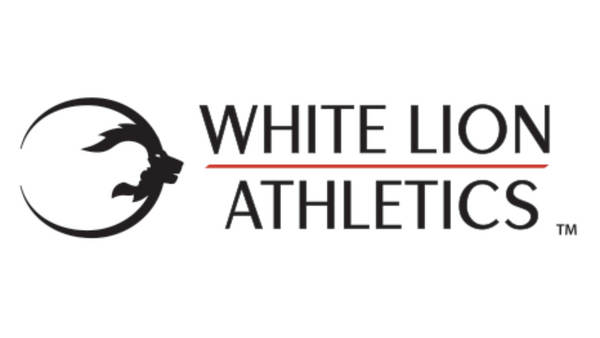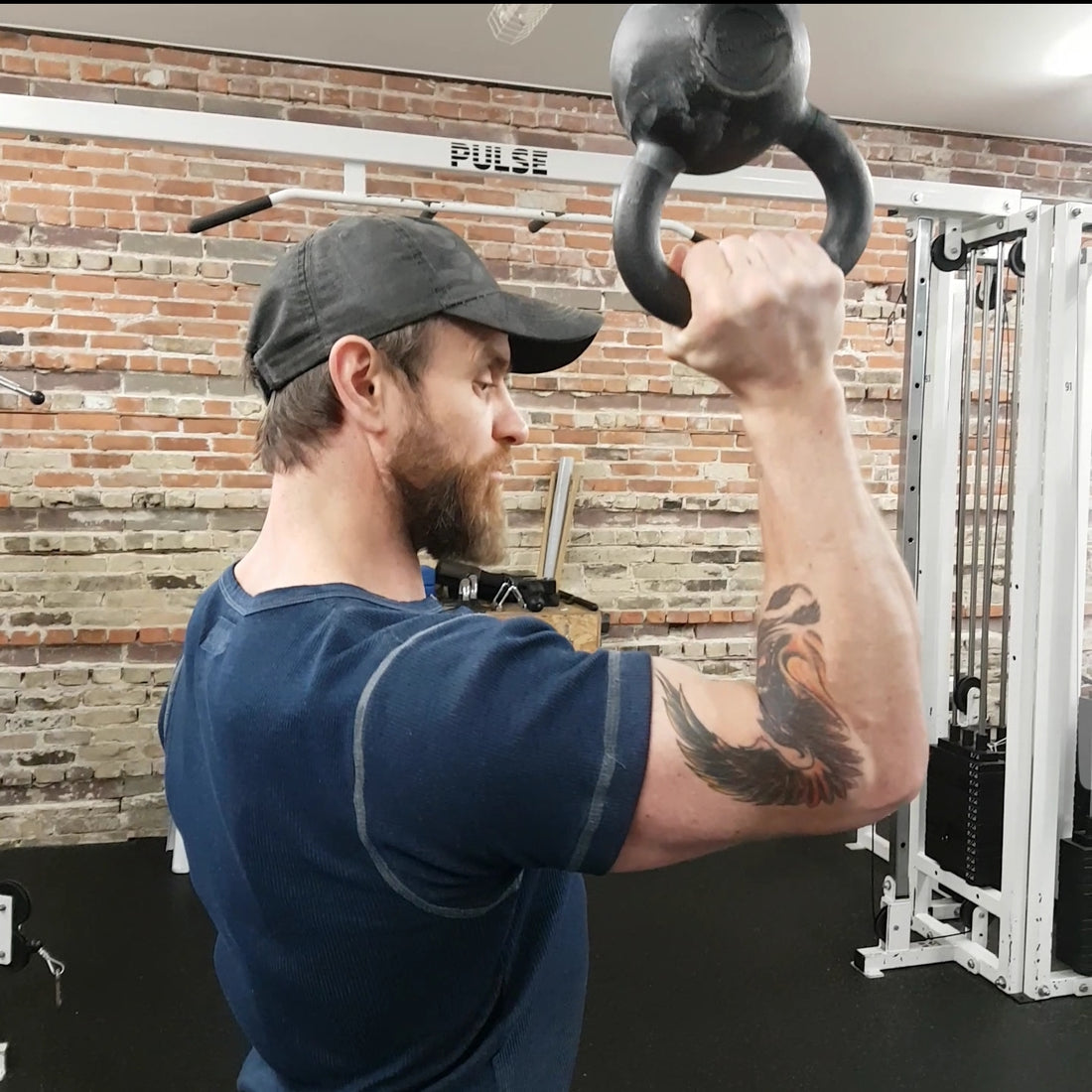
The Best Kettlebell Training that you are not doing
DJ GuzdaShare
1 Thing You Need to Know About Kettlebells: Orientation is The Key
The Bottoms-Up (BU) kettlebell (KB) position is the re-orientation of the KB so that it becomes top-heavy – you basically hold the KB with the bottom of the bell facing upward with the handle centered in your palm.
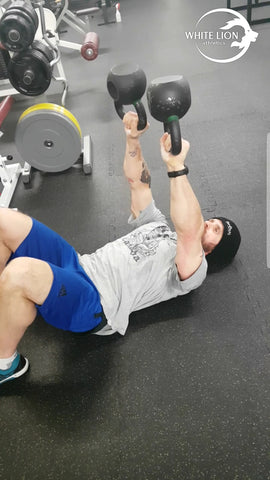
There are many benefits to re-orientating the KB into a BU position and performing holds, carries, presses and other KB movements (Turkish Get-Ups, Windmills etc..). These benefits span into a number of areas aside from improving your KB practice when the KB is positioned conventionally (bottom- down).
Looking for Kettlebells? Click on the Kettlebell Below
7 Benefits to Bottoms-Up Kettlebell Training:
-
Low weight load with high stimulus: increased neural drive to stabilize and move the KB as well as not let it move in an undesired direction.
-
Strengthen rotator cuff: the KBs top-heavy weight load will increase the demands of the rotator cuff muscles with relatively low loading.
-
Low weight load with substantial feedback: The top-heavy orientation of the KB will demand ideal technique and optimal stabilization – anything less will result in a missed rep.
-
Grip Strength and Wrist Stabilization: Finger tips to elbows will be completely engaged to stabilize the KB in your hand and maintain optimal position.
-
Enhanced Mental Focus: 100% focus is required for the entire movement
-
Teaches you full body tension with lighter loads due to the muscle irradiation. This is when other muscles are contracting and assisting (like your forearms, shoulder and core) when gripping a bottoms up KB.(3)
-
They’re joint friendly. Bottoms-up KB movements reinforce proper lifting mechanics into the CNS and because of this it can sometimes help athletes return to movements they’ve been avoiding with reduced pain and better form. (2)
All these benefits aside, how could you introduce KB training into your programming or your clients’ programming without any hesitation? Here are 10 ways to introduce BU KB exercises in your training.
Bottoms-Up KB Position (Single Arm): An Exercise for Warm-Up & Stand-Alone Exercise
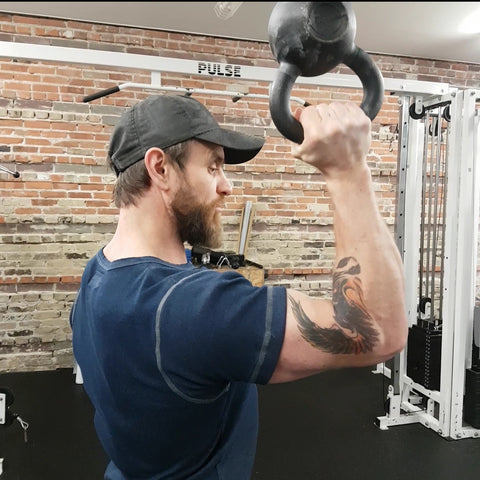
9 Ways to Introduce Bottoms-Up KB Exercises into Your Training
The Single Arm KB Bottom’s-Up will be our focus. You can definitely use two hands on the horns of a single KB and have it in the Bottoms-Up position, but it will not present you with the same training stimulus as using a single arm. You can also introduce two KBs in the bottoms-up position.
9 Kettlebell exercises that will make you stronger:
1. Bottoms-Up Supine Hold
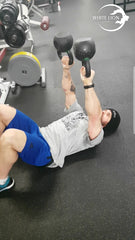
2. The Front Rack (hold)

Jeff Kearns | True Strength + Conditioning | @jkearns7
3. The Front Rack Carry
4. The Waiter’s Carry

McKenzie Hill | True Strength + Conditioning | @mckenziejanehill
5.The Overhead Carry
6.KB Chest Press
7.Bottoms-Up Clean
7.Half Kneeling Overhead Press

Jeff Kearns | True Strength + Conditioning | @jkearns7
8.Standing Overhead Press
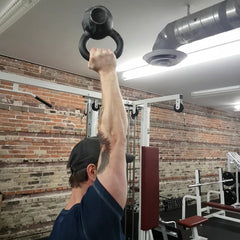
9. The Windmill
The order of these exercises can be used as progression for your Bottoms-Up exercises. The Bottoms-Up Position can be introduced into anyone these exercises as a warm-up and they can also be used as a stand-alone exercises with multiple objectives: general strength & endurance; rehab or prehab; deloading; or to specifically increase grip strength/endurance or rotator cuff strength/endurance.Before starting, we need to acquire an understanding of the all the components that will make these exercise a success.
4 Ways to Improve Your Kettlebell Workouts with a Bottoms-Up Kettlebell
- Breathing: it seems pretty easy, right? It’s just a 6kg KB. Maintaining inter-abdominal pressure while intentionally breathing will be key. Rapid shallow chest (or erratic) breathing) will bring the exercise to screeching halt.
-
100% Mental Focus & Body Awaressness: Regardless of you body position (supine, kneeling, standing, seated or otherwise), your 100% focus will help you identify where your weak links are. What are
“weak links”? - Full Body Tension: the Weak Links: What are weak links? Imagine a hose with 1000 liters of water pumping through it per minute. The smallest leak will reduced that output to below 1000 liters and will likely cause a blow-out of the hose. The same is true with us. Bottoms-Up KB work will demand the creation and maintenance of optimal postural position through scapular control and abdominal bracing. Additionally the prinicples of Irradiation and Muscle Co-Activation. (5)
- Efficient Grip: optimal grip strength will be realized from both maximal force output on an object that is placed in best position in your palm. The bottoms-up KB will give you immediate feedback on positioning based on its instability in your palm.
The Best Way to Start Bottoms-Up Kettlebell Work: Warm-up your grip.
Starting off, we just need to squeeze the fingers. If your pinky and ringer finger are normally very under-active in your grip st (as most are), having them actually apply a lot of pressure (and have the tissue on these finger tips experience this pressure) is something we're not really too familiar with.
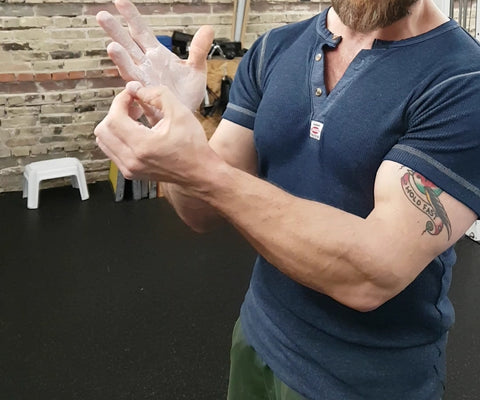
When starting with the Bottoms-Up KB - it doesn't matter what you're doing, whether it's a carry, overhead pressing – this exercise will be a great idea to get things going so you get a sense of how this tissue feels when it's under pressure.
Take your thumb and forefinger, on the opposite hand, and just squeeze.
What we are doing is developing a sense of how it feels to have pressure applied on these fingers so when we grab onto the KB in the bottoms-up position, we're going to try to replicate this feeling of pressure.
The first instance of stabilization for the KB will be your hand with balanced positioning in your palm and optimal grip strength. When we are instructed to “squeeze” the KB and stabilize it, we approach this task with sense of understanding of what it feels like to actually have a lot of pressure on this tissue. Otherwise you might not understand and say what are we squeezing hard with? Now we actually know what it feels like to get pressure on this tissue.
The second thing: grab a lacrosse ball or grab a peanut ball... and with the peanut ball it's a little bit easier. So just do some tactile warming up here.
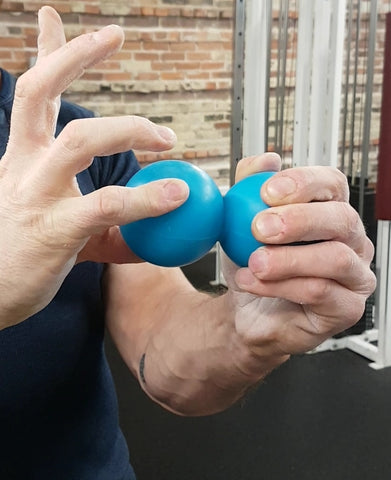
Simply squeeze... thumb and forefinger... again, ring finger... thumb... pinky and then back again. What we're trying to do is we're trying to get some independent feedback here from each of these fingers, get them warmed up, get them ready to work independently because normally in our grip, these ones here are doing a lot of the grabbing. So this would be a really great exercise too to warm up.
You can use anything really, tennis ball... you can even go along the actual side of the KB here if you don't have a cross ball to squeeze and squeeze and squeeze. The idea here is to get them warmed up and get them ready to work.

With KBs, everyone is looking for a heavier KB. How about this: Change the orientation of the KB to make it more challenging. That'll be a great way to, first of all, save money, don't buy more KBs than you need, but also you can use a relatively lightweight and increase the demands on the movement that you're doing.
In the bottoms-up position, the KB is top-heavy so there is strong sense of needing to control the KB. You don't want it to go into an ulnar or radially deviated position; grip through all fingers and control is going to be very important.
What Do We Do with the Unloaded Hand?
The next important (and often overlooked) issue is: what do I do with the unloaded hand?
The more tension that we have in our body, the more supported and stable our movement pattern will be. What is this tension I am referring to? The more muscles in your body that are contracting, the more there will be.
What we will do is make a fist and squeeze tight; we can even grab a ball or empty water bottle, right? Anything that you can create more tension in this system so that you're going to be having as much stability as possible.
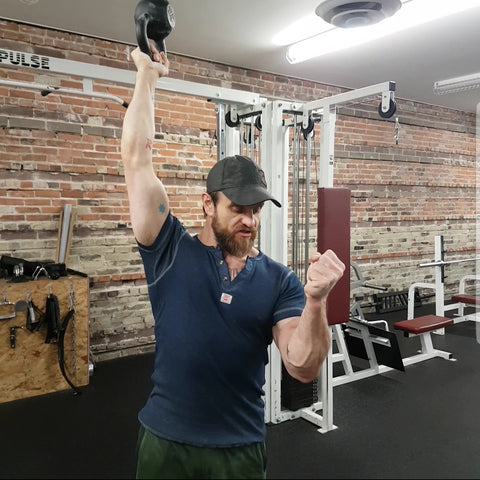
What I'm thinking about here is that I am going to make it fist and reach down into “my pocket”. When I do that, my scapula will depress from my pec minor and low traps engaging going to engage. From that point, my shoulder girdle will be as rigid as possible when I'm carrying this.

In Summary
BU KB training will only be effective if you decided do it with a good understanding of what your training objective is and you understand how to set up the exercise and successfully execute it.
Work Cited & References- Horsley I, Herrington L, Hoyle R, Prescott E, Bellamy N. Do changes in hand grip correlate with shoulder rotator cuff function? Shoulder and Elbow Apr: 8 (2): 124-129, 2016.
- Seedman, J. Bottoms-Up Training: Fix Your Shoulders and Pressing Technique Today. 17 May, 2016 https://www.elitefts.com/education/bottoms-up-training-fix-your-shoulders-and-pressing-technique-today/
- Nunes, Monara & Silva¹, Diandra. (2016). Motor Irradiation According to the Concept of Proprioceptive Neuromuscular Facilitation: Measurement Tools and Future Prospects. International Journal of Physical Medicine & Rehabilitation. 04. 10.4172/2329-9096.1000330.
- Parvatikar V.B, Mukkannavar P.B. Comparative Study of Grip Strength in Different Positions of Shoulder and Elbow with Wrist in Neutral and Extension Positions. Journal of Exercise Science and Physiotherapy: Vol. 5, No.2: 67-75, 2009
- Kofotolis, I. S. Vrabas, E. Vamvakoudis, A. Papanikolaou, and K. Mandroukas, “Proprioceptive neuromuscular facilitation training induced alterations in muscle fibre type and cross sectional area,” British journal of sports medicine, vol. 39, no. 3, p. e11, 2005.
- Sporrong H, Styf J. Effects of isokinetic muscle activity on pressure in the supraspinatus muscle and shoulder torque. J Orthop Res 17: 546 –553, 1999.
- Sporrong H, Palmerud G, Herberts P. Hand grip increases shoulder muscle activity: an EMG analysis with static hand contractions in 9 subjects. Acta Orthop Scand 67: 485–490, 1996.
- Sporrong H, Palmerud G, Herberts P. Influences of handgrip on shoulder muscle activity. Eur J Appl Physiol Occupat Physiol 71: 485–492, 1995.
